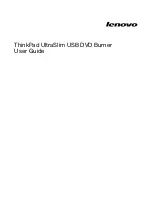
through the slot in the motor's bracket, and re-threading it
into the mount.
5. Tighten the socket-head setscrew on the end of the drive
coupler. The setscrew should seat into the groove on the
end of the worm gear shaft. You may need to rotate the
worm gear, using the R.A. slow-motion control cable, for
the setscrew and the groove to line up. You may also need
to adjust the drive coupler on the motor's output shaft to
position the setscrew over the groove; this is done by
loosening the setscrew on the drive coupler that is closest
to the motor. Once both setscrews are tightened, the R.A.
motor is engaged. When the motor is engaged, never,
under any circumstances, should you use the R.A. slow-
motion control cable. If you want to use it, first loosen the
setscrew on the end of the coupler to disengage the
motor drive.
The motor is now properly installed on the EQ-3 mount,
and should appear as in Figure 4.
3. Operation
Insert four D-cell batteries into the battery pack. Orient the
batteries as indicated on the white plastic battery holder.
Connect the end of the battery pack's power cord to the DC
power input on the hand controller.
There is a white cord that is permanently connected to the
hand controller. Connect the plug on the end of the cord to
the socket on the R.A. motor drive assembly.
For the motor drive system to track the motion of the night
sky properly, the equatorial mount must be polar aligned.
This involves aligning the R.A. axis of the mount so it is paral-
lel to the Earth's axis of rotation (polar axis). Consult the
manual that came with your equatorial mount for details on
how to polar align it. The telescope also must be well bal-
anced on the mount's R.A. axis.
When observing in the Northern Hemisphere, the N/S switch
on the hand controller should be in the "N" position. For the
Southern Hemisphere, it should be in the "S" position.
Make sure the motor is engaged (i.e. setscrews on the drive
coupler are tightened), and turn the power switch on the
hand controller to the "ON" position. The LED in the center of
the hand controller should be shining green. If properly polar
aligned and balanced, the mount will now be tracking the
motion of the night sky, and the telescope should hold any
astronomical object in its eyepiece steady over time.
To move your telescope to a new object, loosen both the R.A.
and Dec. lock levers and move the telescope until it is pointed
in the general direction of the object you wish to view.
Retighten the R.A. and Dec. lock levers. Now, disengage the
motor drive by loosening the setscrew on the end of the drive
coupler, and use the R.A. and Dec. slow-motion control cables
to center the object in the eyepiece's field of view. Re-engage
the motor by tightening the setscrew, and the motor drive sys-
tem will keep the object centered over time. Remember, never
use the R.A. slow-motion control cable when the motor is
engaged or you could permanently damage the motor.
There are four buttons on the hand controller. If no buttons
are pressed, the motor will turn the R.A. axis of the mount at
siderial rate. If the bottom right button is pressed, the motor
will turn at 2x siderial rate, which will cause objects viewed in
the telescope’s eyepiece to move slowly eastward. If the bot-
tom left button is pressed, than the motor will stop turning,
which will cause objects in the eyepiece to move slowly west-
ward. The bottom two buttons are most useful for guiding
purposes during long-exposure astrophotography.
Similarly, the top right button on the hand controller moves
objects in the telescope’s eyepiece quickly eastward at 8x
the siderial rate, while the top left button moves objects
quickly westward at 8x siderial. The top two buttons are most
useful for centering an object in R.A. within the field-of-view
of an eyepiece.
Note that whenever any of the four buttons on the hand con-
troller are pressed, the LED in the center of the hand
controller will shine red; when the button is released, the LED
will shine green again.
4. Specifications
Guiding rate: 2x sidereal, motor pause
Centering rates: ±8x sidereal
Power requirement: 6V DC
Battery type: D-cell, quantity four
Northern or Southern Hemisphere operation
DC stepper motor
One-Year Limited Warranty
This Orion EQ-3M Dual-Axis DC Motor Drive System is warranted
against defects in materials or workmanship for a period of one year
from the date of purchase. This warranty is for the benefit of the
original retail purchaser only. During this warranty period Orion
Telescopes & Binoculars will repair or replace, at Orion’s option, any
warranted instrument that proves to be defective, provided it is
returned postage paid to: Orion Warranty Repair, 89 Hangar Way,
Watsonville, CA 95076. If the product is not registered, proof of pur-
chase (such as a copy of the original invoice) is required.
This warranty does not apply if, in Orion’s judgment, the instrument has
been abused, mishandled, or modified, nor does it apply to normal wear
and tear. This warranty gives you specific legal rights, and you may also
have other rights, which vary from state to state. For further warranty
service information, contact: Customer Service Department, Orion
Telescopes & Binoculars, 89 Hangar Way, Watsonville, CA 95076; (800)
676-1343.
Providing Exceptional Consumer Optical Products Since 1975
Customer Support (800) 676-1343
E-mail: [email protected]
Corporate Offices (831) 763-7000
89 Hangar Way, Watsonville, CA 95076
IN 156 Rev. B 02/09




















